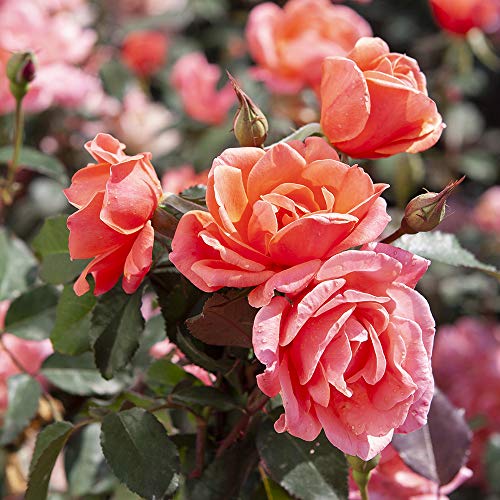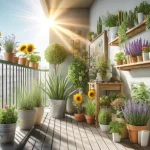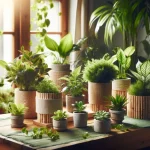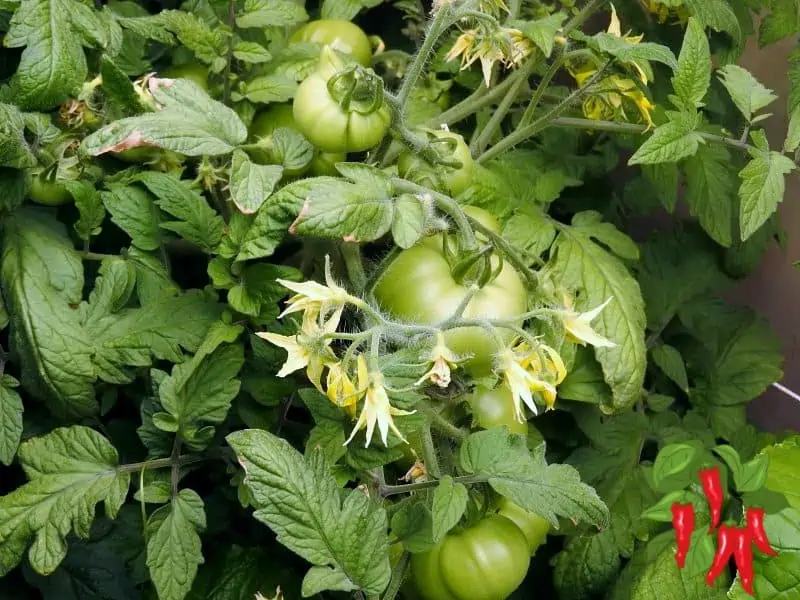This post may contain affiliate links. If you buy something from one of our links we may earn a commission. Thanks
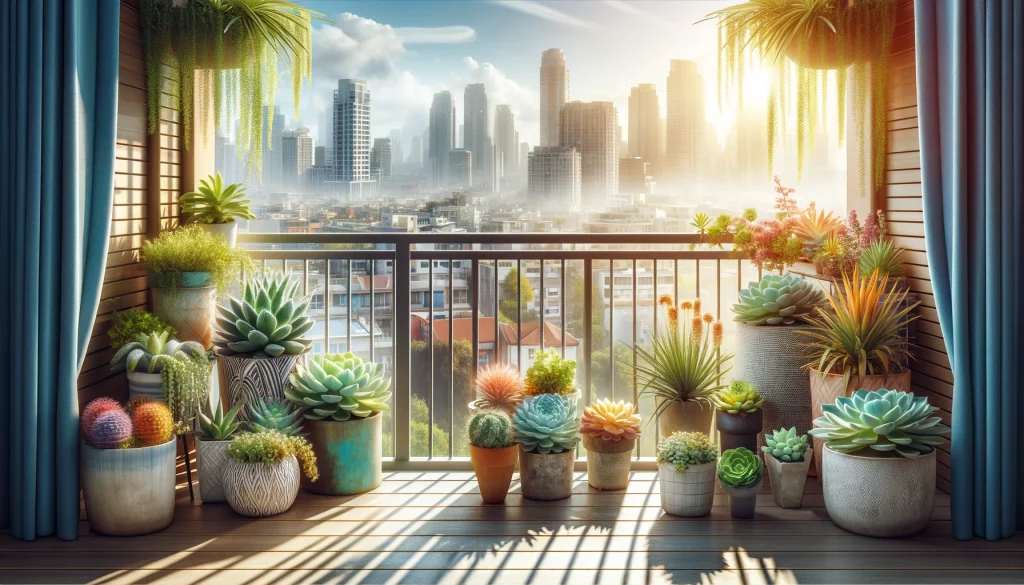
Discover outdoor plants that like direct sunlight. Explore a variety of sun-loving plants that not only beautify your space but are also easy to care for.
Plants for Direct Sunlight Key Takeaways:
- Outdoor plants that like direct sunlight include succulents, sunflowers, lavender, roses, and cacti.
- They flourish under the sun, adding vibrant colors and unique textures to your garden.
- With proper care like adequate watering and well-draining soil, these plants can thrive, enhancing your outdoor space’s beauty and functionality.
Outdoor Plants That Like Direct Sunlight
Outdoor plants that thrive in direct sunlight can bring beauty and vibrancy to any outdoor space.
Not only do they add aesthetic appeal, but they also offer a range of benefits.
When choosing and caring for these sun-loving plants, it’s important to understand their unique needs.
By doing so, you can ensure their health and longevity in your garden or outdoor area.
Benefits of Sunloving Plants
The benefits of growing outdoor plants that like direct sunlight are numerous.
Firstly, these plants thrive in full sunlight, allowing them to flourish and showcase their vibrant colors and lush foliage.
They are specifically adapted to withstand the heat and intensity of the sun, making them low maintenance and easy to care for.
Enhanced Aesthetics
These plants can greatly enhance the curb appeal of your outdoor space.
Whether you’re looking to create a colorful flowerbed, add some greenery to your patio, or create a focal point in your garden.
These sun-loving plants can greatly enhance the overall appearance and attractiveness of your outdoor area.
Improved Air Quality
In addition to aesthetics, growing outdoor plants that like direct sunlight can also improve air quality.
Through the process of photosynthesis, these plants convert carbon dioxide into oxygen, helping to purify and freshen the air around them.
This can contribute to a healthier and more pleasant outdoor environment for you and your family.
Selecting and Caring for Outdoor Plants That Like Direct Sunlight
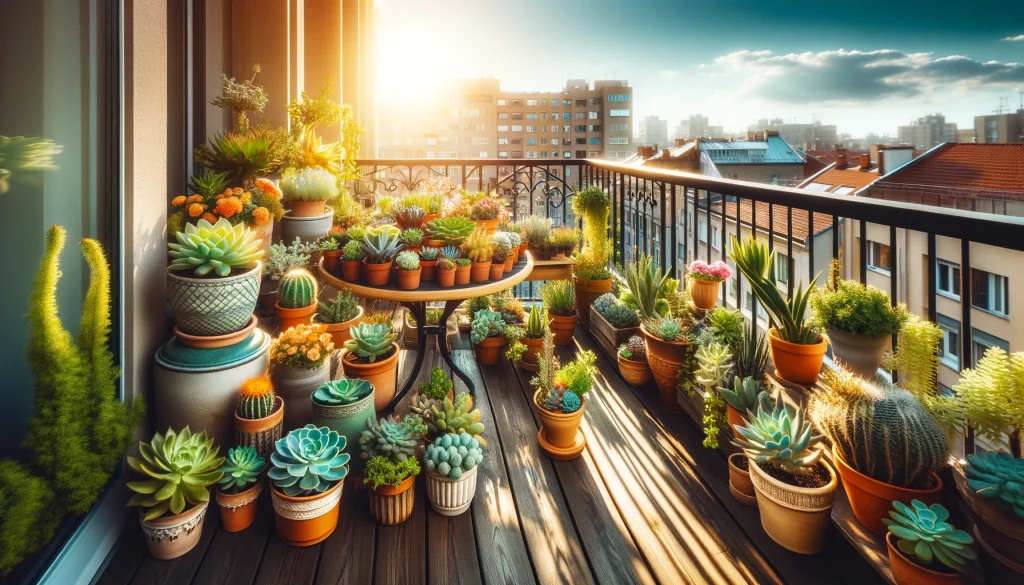
When selecting outdoor plants that like direct sunlight, there are a variety of options to choose from.
Some popular choices include succulents, sunflowers, lavender, roses, and cacti.
These plants have different growth habits, colors, and textures, allowing you to create a diverse and visually appealing outdoor landscape.
To ensure the health and vitality of these sun-loving plants, proper care is essential.
This includes adequate watering, providing them with the right soil and drainage conditions, mulching to retain moisture and suppress weeds, and regular pruning and deadheading to promote healthy growth and prevent overgrowth.
To avoid common mistakes when growing outdoor plants that like direct sunlight, it’s important to avoid overwatering, as this can lead to root rot and other issues.
Planting them in inadequate soil or neglecting pests and diseases can hinder their growth and overall health.
By understanding the benefits, choosing the right plants, caring for them properly, and avoiding common mistakes, you can create a stunning outdoor space filled with beautiful plants that thrive in direct sunlight.
Benefits of Growing Outdoor Plants That Like Direct Sunlight
If you’re looking to amp up your garden game, then you’ve come to the right place!
In this section, we’ll be diving into the fantastic benefits of growing outdoor plants that simply thrive in direct sunlight.
From boosting your home’s curb appeal to purifying the air around you, we’ll uncover how these sunlight-loving plants can transform both your outdoor space and your well-being.
Get ready to soak up some rays and discover the beauty and advantages of nurturing these sun-kissed wonders!
Thrive in Full Sunlight
- Succulents: Succulents are outdoor plants that thrive in full sunlight. They have adapted to arid conditions and can store water in their thick leaves, enabling them to withstand the intense heat and sunlight.
- Sunflowers: Sunflowers, as their name suggests, are sun-loving plants that thrive in full sunlight. They have large, vibrant yellow flowers that track the sun’s movement throughout the day, maximizing their exposure to sunlight.
- Lavender: Lavender is a beautiful and fragrant plant that thrives in full sunlight. It requires at least six hours of direct sunlight each day to grow and bloom properly.
- Roses: Roses are classic garden flowers that prefer full sunlight. To produce abundant, colorful blooms, they need at least six to eight hours of direct sunlight per day. Insufficient sunlight may result in weak growth or lack of flowering.
- Cacti: Cacti are desert plants that thrive in full sunlight. They have adapted to arid environments, tolerating high temperatures and intense sunlight. Their water storage ability helps them survive in hot and dry conditions.
These outdoor plants, which thrive in full sunlight, are perfect for landscapes and gardens with ample sunlight throughout the day.
When planning your garden or choosing plants for your outdoor space, consider the sunlight requirements of these plants.
Ensure adequate water, well-draining soil, and regular maintenance to promote the health and growth of these plants.
Enhance Curb Appeal
- To enhance curb appeal, choose colorful flowers: Including outdoor plants that like direct sunlight with vibrant and eye-catching blooms can instantly enhance curb appeal. Flowers like sunflowers, roses, and lavender can add a pop of color to your landscape.
- Consider plant height and structure to enhance curb appeal: Incorporating outdoor plants that have varied heights and unique structures can add visual interest to your front yard. Tall plants like sunflowers can create a dramatic focal point, while low-growing plants like succulents can provide a textured ground cover.
- Integrate different textures to enhance curb appeal: Mixing outdoor plants with different leaf textures can create a visually appealing landscape. For example, pairing the smooth, glossy leaves of sunflowers with the rough, intricate foliage of cacti can add depth and dimension to your garden.
- Use planters and containers to enhance curb appeal: Incorporating outdoor plants in decorative planters and containers can enhance curb appeal by adding style and sophistication. Place them strategically near the entrance of your home or along pathways to create a welcoming atmosphere.
- Combine perennial and annual plants to enhance curb appeal: Utilizing a combination of perennial and annual outdoor plants can ensure your curb appeal remains consistent throughout the year. Perennial plants like roses provide long-lasting beauty, while annuals like sunflowers offer seasonal bursts of color.
By following these tips, you can enhance curb appeal by selecting and arranging outdoor plants that thrive in direct sunlight.
Improve Air Quality
Improving air quality is a crucial benefit of growing outdoor plants that like direct sunlight.
By incorporating these plants into your outdoor space, you can enhance the overall air quality in your environment.
Plants have the remarkable ability to absorb carbon dioxide and release oxygen through a process called photosynthesis.
This vital process helps to purify the air and increase oxygen levels, creating a healthier atmosphere.
Certain plants, such as succulents, sunflowers, lavender, roses, and cacti, are particularly effective at improving air quality.
They naturally filter out harmful pollutants and toxins, reducing the presence of harmful substances in the air.
For example, succulents like Aloe Vera and Snake Plant are known for their ability to remove volatile organic compounds (VOCs) commonly found in cleaning products, paints, and furniture.
Sunflowers absorb chemicals like formaldehyde and benzene found in vehicle emissions.
Lavender is known for its ability to purify the air by absorbing pollutants and releasing a soothing aroma.
Roses and cacti also contribute to cleaner air by filtering out toxins and releasing oxygen.
To truly improve air quality, it’s important to cultivate a variety of these plants in your outdoor space.
By incorporating a diverse range of plants, you can maximize their air-purifying capacity and create a more sustainable environment.
So, by choosing outdoor plants that like direct sunlight and focusing on those that improve air quality, you can significantly enhance the overall health and well-being of your outdoor environment.
Choosing the Right Outdoor Plants That Like Direct Sunlight
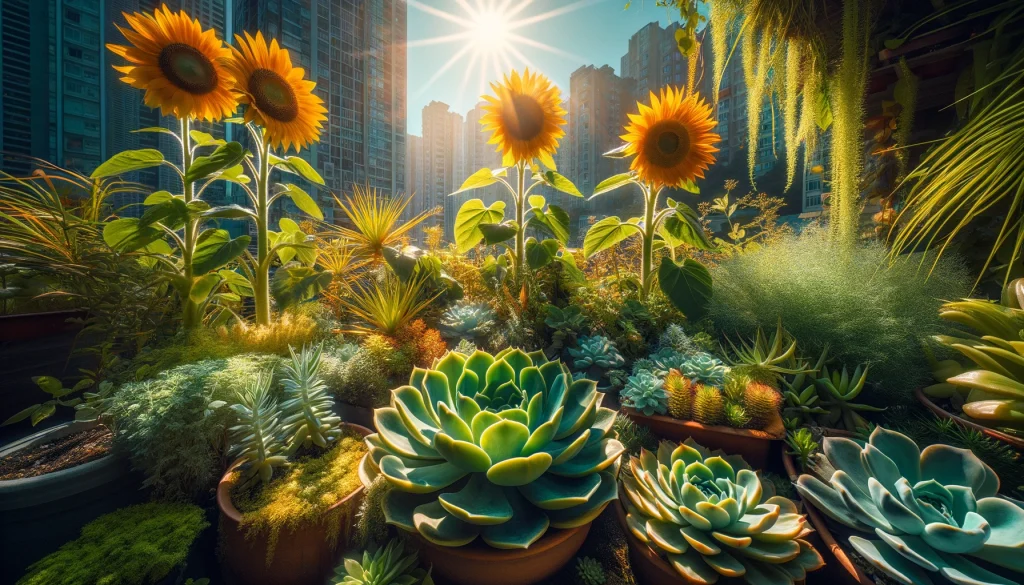
If you’re looking to brighten up your outdoor space with plants that thrive in direct sunlight, you’ve come to the right place!
In this section, we’ll explore a variety of options that will flourish under the sun’s warm rays.
From resilient succulents to vibrant sunflowers, fragrant lavender to elegant roses, and even hardy cacti, there’s an outdoor plant for every sunny spot in your garden.
Get ready to discover the perfect green companions that will bask in the sunshine and bring life to your outdoor oasis.
Succulents
| Succulents |
| Succulents are a type of outdoor plant that thrives in direct sunlight. |
| Succulents are known for their ability to store water in their leaves, stems, and roots, making them drought-tolerant plants. |
| Succulents come in a variety of shapes, sizes, and colors, adding visual interest to any outdoor space. |
| Succulents require minimal maintenance and are perfect for busy individuals or those with limited gardening experience. |
| When caring for succulents, it is important to provide them with well-draining soil to prevent root rot. |
| Overwatering is one of the most common mistakes when growing succulents, so it is crucial to let the soil dry out between waterings. |
| Succulents should be placed in an area that receives at least six hours of direct sunlight per day to ensure proper growth. |
| Succulents are also versatile and can be grown in containers, hanging baskets, or within rock gardens. |
| Succulents are known for their ability to propagate easily, allowing you to expand your collection by taking stem cuttings or leaf cuttings. |
| Succulents are a great choice for outdoor plants that like direct sunlight due to their low maintenance nature, unique appearance, and ability to thrive in sunny conditions. |
Sunflowers
Sunflowers are a popular choice for outdoor plants that thrive in direct sunlight. Here are some reasons why sunflowers are a great addition to your garden:
- Beautiful blooms: Sunflowers are known for their large, vibrant yellow flowers. They can add a pop of color and beauty to any garden or landscape.
- Attract pollinators: Sunflowers are a magnet for bees and butterflies, making them beneficial for pollination in your garden. Their bright flowers and plentiful nectar attract these important creatures.
- Low maintenance: Sunflowers are relatively easy to grow and require minimal care. They are tolerant of various soil conditions and can withstand hot and dry climates.
- Edible seeds: Sunflower seeds are not only tasty but also nutritious. They are a good source of healthy fats, protein, and vitamins. You can harvest the seeds and enjoy them as a snack or use them in cooking and baking.
Pro-tip: When planting sunflowers, make sure to choose a sunny location with well-draining soil.
Provide adequate watering, especially during dry spells, to promote healthy growth.
Regularly deadhead the flowers to encourage continuous blooming throughout the season.
Lavender
Here is a table summarizing the characteristics of
| Name | Lavender |
| Sunlight Requirements | Full sunlight, at least 6-8 hours per day |
| Watering Needs | Low to moderate water requirements |
| Soil Type | Well-draining soil, prefers sandy or loamy soil |
| Growth Rate | Moderate to fast growth rate, can spread up to 2-3 feet |
| Mature Height | 12-24 inches |
| Bloom Time | Summer, typically June to August |
| Bloom Color | Purple, pink, white, or blue |
| Uses | Popular for its aromatic foliage and flowers, used in culinary recipes, essential oils, and home remedies |
Lavender is an outdoor plant that thrives in direct sunlight, requiring at least 6-8 hours of sun exposure per day.
It prefers well-draining soil, such as sandy or loamy soil, and has low to moderate water requirements.
Overwatering should be avoided, as it can lead to root rot.
With a moderate to fast growth rate, lavender can spread up to 2-3 feet.
It reaches a mature height of 12-24 inches and blooms during the summer months, typically from June to August.
The flowers come in various colors, including shades of purple, pink, white, or blue.
Lavender is highly valued for its aromatic foliage and flowers. It is commonly used in culinary recipes, essential oil production, and home remedies.
The plant’s soothing fragrance and beautiful blooms make it a popular choice for gardens, borders, and containers.
To ensure the health and vitality of lavender plants, proper care is essential.
This includes pruning and deadheading faded flowers to promote new growth and prolong blooming.
Regular mulching can help conserve moisture and control weeds around the plants.
Lavender is a versatile outdoor plant that thrives in direct sunlight. With its attractive flowers, fragrance, and multiple uses, it is a great addition to any garden or landscape.
Roses
| Roses |
| Roses are beautiful and popular outdoor plants that thrive in direct sunlight. |
| Roses enhance the aesthetic appeal of any garden or outdoor space. |
| They require at least six hours of direct sunlight daily to bloom and grow properly. |
| There are various types of roses to choose from, including hybrid teas, floribundas, grandifloras, climbers, and shrubs. |
| Roses come in a wide range of colors, such as red, pink, white, yellow, and purple. |
| Caring for roses involves regular watering, proper soil and drainage, mulching, and pruning. |
| When watering roses, it is important to provide them with adequate moisture, ensuring the soil is evenly moist but not waterlogged. |
| Roses prefer well-draining soil with a pH level between 6.0 and 7.0. |
| Mulching around the base of the rose plants helps retain moisture, regulate soil temperature, and prevent weed growth. |
| Pruning and deadheading are essential to promote healthy growth and continuous blooming. |
When choosing roses for your garden, consider the specific varieties that are well-suited to your climate and the desired color scheme.
It is also important to regularly monitor for pests and diseases, as roses can be susceptible to aphids, black spot, and powdery mildew.
By following these care guidelines, you can ensure that your roses thrive and add beauty to your outdoor space.
Remember to consult local gardening experts or resources for specific recommendations and tips on growing roses in your area. Happy gardening!
Cacti
When it comes to outdoor plants that like direct sunlight, cacti are a great choice. Here are some reasons why:
For more information on outdoor plants that like direct sunlight, you can visit outdoor plants that like direct sunlight.
- Cacti thrive in full sunlight: These plants are adapted to desert environments and are able to withstand the intense heat and direct sunlight. They can handle long periods of sun exposure without getting scorched or damaged.
- Cacti enhance curb appeal: With their unique and interesting shapes, cacti can add a touch of exotic beauty to any outdoor space. They are eye-catching and can be a great focal point in a garden or landscape.
- Cacti improve air quality: Like other plants, cacti contribute to improving air quality by absorbing carbon dioxide and releasing oxygen. They can also help filter out pollutants from the air, making it cleaner and healthier to breathe.
- Cacti require minimal maintenance: These plants are known for their ability to store water in their stems and leaves, making them highly drought-tolerant. This means that they require less watering compared to other plants, making them low-maintenance and perfect for busy individuals or those with limited gardening experience.
- Cacti are resilient: Cacti are adapted to survive harsh conditions, such as extreme temperatures, drought, and poor soil quality. They are hardy and can withstand neglect, making them a great choice for beginners or those who may not have a green thumb.
It’s important to note that while cacti are generally low-maintenance, they do require some care.
Adequate watering, well-draining soil, and protection from frost are essential for their health and longevity.
By following these guidelines, you can enjoy the beauty and benefits of cacti in your outdoor space.
Cacti have a long history of being used by indigenous cultures for various purposes.
Native to the Americas, cacti have been used for food, medicine, and even religious ceremonies.
Their unique adaptations to arid environments have made them an important resource for survival in desert regions.
Today, cacti are not only valued for their practical uses but also for their aesthetic appeal and ability to thrive in diverse climates.
They continue to be popular among gardeners and plant enthusiasts around the world, bringing a touch of exotic beauty to homes and landscapes.
Caring for Outdoor Plants That Like Direct Sunlight
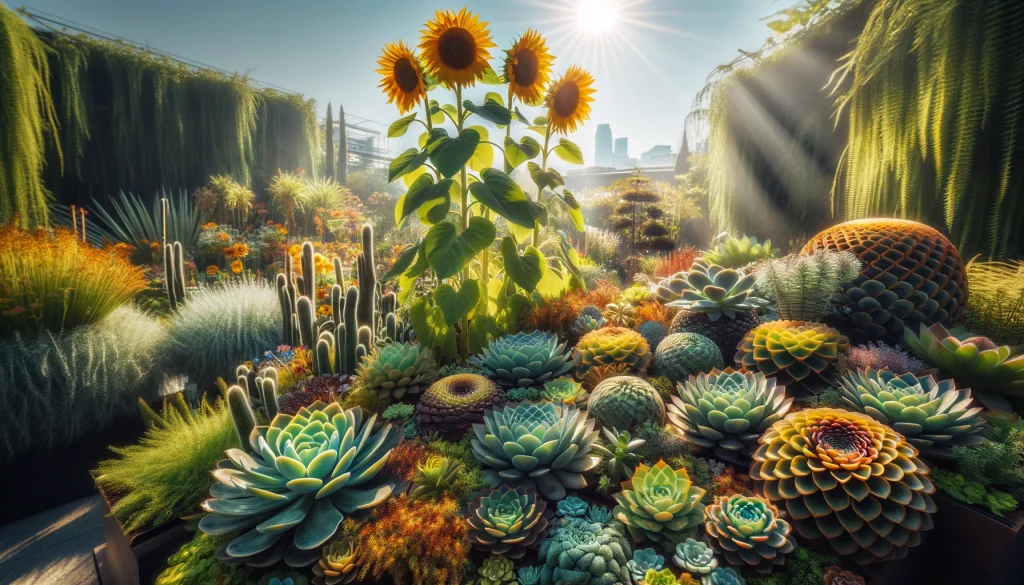
Caring for outdoor plants that thrive in direct sunlight is a crucial task for any gardener.
In this section, we will explore the essential elements of proper plant care, covering everything from adequate watering techniques to maintaining the ideal soil composition and drainage.
We’ll also delve into the benefits of mulching and the importance of regular pruning and deadheading.
So, grab your gardening gloves and get ready to soak up the sun with these expert tips for fostering healthy outdoor plants.
Adequate Watering
Adequate watering is essential for the health and growth of outdoor plants that prefer direct sunlight.
Insufficient or excessive watering can cause stress, wilting, and even death of the plants.
Here are some important points to consider when it comes to watering these plants:
- Water regularly: Outdoor plants that thrive in direct sunlight often require regular watering, especially during hot and dry weather conditions. The soil should be consistently moist, but not waterlogged.
- Monitor soil moisture: Regularly check the moisture level of the soil to determine when watering is needed. Insert your finger about an inch into the soil. If it feels dry, it’s time to water the plants. If it feels moist, it’s best to wait before watering to avoid overwatering.
- Water deeply: When watering outdoor plants that like direct sunlight, it’s crucial to water deeply. This promotes the growth of roots deeper into the soil, resulting in stronger and healthier plants. Make sure to water the base of the plants instead of spraying the foliage.
- Timing is key: Water outdoor plants that prefer direct sunlight in the early morning or late evening when temperatures are cooler. This allows the plants to absorb the water before it evaporates under the sun’s heat. Avoid watering during the hottest part of the day to prevent water loss and potential damage to the plants.
- Adjust watering based on weather conditions: During periods of heavy rain, you may need to reduce the frequency of watering. On the other hand, during dry spells, you may need to increase watering to ensure sufficient moisture for the plants.
Remember, each plant has specific watering needs, so it’s vital to research and understand the requirements of the plants you are growing.
By providing adequate watering, you can promote healthy growth and vibrant outdoor plants that thrive in direct sunlight.
Proper Soil and Drainage
- The proper soil and drainage are crucial factors to consider when growing outdoor plants that like direct sunlight. Here are some key points to keep in mind:
- When growing outdoor plants that like direct sunlight, it is important to ensure that the soil provides proper drainage. This will prevent water from accumulating around the roots, avoiding issues like root rot. It is ideal to use sandy or loamy soil to promote good drainage.
- Another important factor is the nutrient content of the soil. Outdoor plants often require a healthy soil composition to thrive. To improve the nutrient content, you can add organic matter such as compost or well-rotted manure.
- Don’t forget to regularly check the pH level of the soil. Most outdoor plants that like direct sunlight prefer a slightly acidic to neutral pH range. If necessary, you can adjust the pH level by adding amendments like lime or sulfur.
- Considering the specific water needs of the plants is also vital. While they enjoy direct sunlight, not all plants have the same water requirements. Some may prefer drier conditions, while others may need more frequent watering. It is essential to observe your plants and water them accordingly to prevent over or under-watering.
- Avoid planting in areas with poor drainage. Low-lying spots or heavy clay soils can hinder proper drainage. If needed, you can amend the soil with coarse sand or gravel to improve the drainage conditions.
By ensuring proper soil and drainage conditions, your outdoor plants that like direct sunlight will have a better chance of thriving and producing beautiful blooms or lush foliage.
Remember to regularly monitor the soil moisture levels and adjust your watering schedule accordingly to maintain optimal growing conditions.
Mulching
When it comes to caring for outdoor plants that like direct sunlight, mulching is an essential practice that can greatly benefit the health and growth of your plants.
Mulch is a layer of material, such as wood chips or straw, that is spread over the soil surface around the plants. Here are some reasons why mulching is important:
1. Moisture retention: Mulch helps to retain moisture in the soil by reducing evaporation. This is especially important for outdoor plants that like direct sunlight, as they may be more prone to drying out. By keeping the soil moist, mulch provides the plants with a consistent water supply, reducing the need for frequent watering.
2. Weed prevention: Mulch acts as a barrier, preventing weeds from sprouting and competing with your plants for nutrients and water. This can save you time and effort in weed control, allowing your outdoor plants to thrive without unnecessary competition.
3. Temperature regulation: Mulch helps to regulate soil temperatures by insulating the roots of your plants. It keeps the soil cooler during hot summer days and warmer during chilly nights, creating a more favorable environment for your plants to grow.
4. Soil improvement: As mulch breaks down over time, it adds organic matter to the soil, improving its structure and fertility. This ensures that your outdoor plants receive the necessary nutrients for healthy growth.
Fact: Mulching also helps prevent soil erosion by reducing the impact of raindrops on the soil surface, preventing the loss of valuable topsoil.
Pruning and Deadheading
- Pruning and deadheading are crucial for the proper care of outdoor plants that thrive in direct sunlight. These essential techniques help foster healthy growth, maintain the plant’s shape, and promote abundant blooming. Follow these steps:
- Regularly inspect your plants to identify any dead or dying branches or flowers.
- For clean cuts, use sharp and clean pruning shears. Eliminate any dead or diseased branches at the plant’s base.
- To deadhead flowering plants, cut off faded or spent flowers just above a healthy leaf or bud. This encourages new growth and continuous blooming.
- Eradicate any branches or growth that overlap or rub against each other. This enhances air circulation and reduces the risk of diseases.
- Trim excessively long or leggy branches to maintain the desired shape of the plant.
- After pruning or deadheading, clear any debris around the plant and dispose of it properly to prevent the spread of pests or diseases.
Pro-tip: It is essential to use clean and sharp pruning tools to avoid harming the plant.
Before and after each use, disinfect your tools with rubbing alcohol to prevent the transmission of diseases.
Pruning and deadheading are best performed during the dormant or inactive seasons of outdoor plants to minimize stress on them.
Common Mistakes to Avoid When Growing Outdoor Plants That Like Direct Sunlight
Avoiding these common mistakes is crucial for successfully growing outdoor plants that thrive in direct sunlight.
From overwatering to neglecting pests and diseases, each sub-section in this article will guide you on how to navigate these challenges effectively.
Get ready to discover the key dos and don’ts, backed by expert advice, that will help you create a vibrant and flourishing garden filled with sun-loving plants.
Overwatering
Overwatering can have detrimental effects on outdoor plants that like direct sunlight. It is important to be aware of the risks and take appropriate measures to avoid overwatering.
1. Excessive watering can lead to root rot and fungal diseases, causing the plants to wilt and eventually die.
2. Overwatering can disrupt the oxygen supply to the roots, suffocating them and inhibiting their ability to absorb nutrients.
3. Plants that are overwatered are more susceptible to pests and diseases, as the excess moisture creates a favorable environment for their growth.
4. Overwatering also wastes water and can lead to increased water bills and unnecessary use of resources.
To prevent overwatering:
1. Understand the specific watering needs of each plant. Some plants, like succulents, have low water requirements and will not tolerate excessive moisture.
2. Check the soil moisture before watering. Stick your finger into the soil to a depth of one inch. If it feels dry at that depth, then it is time to water.
3. Water deeply but infrequently. This encourages plants to develop deep root systems, making them more resilient to drought.
4. Ensure proper drainage for your plants. Use well-draining soil and ensure that the pots or planting areas have drainage holes.
5. Consider using a moisture meter to accurately measure the moisture levels in the soil, helping you determine when it’s time to water.
By being mindful of the risks of overwatering and adopting proper watering practices, you can ensure the health and vitality of your outdoor plants that like direct sunlight.
Planting in Inadequate Soil
When planting outdoor plants that like direct sunlight, it is crucial to consider the quality of the soil they will be placed in.
Planting in soil that is not adequate can have a negative impact on plant growth and health.
1. Soil fertility: It is essential to ensure that the soil has enough nutrients to support plant growth. Inadequate soil may lack vital nutrients, such as nitrogen, phosphorus, and potassium, which are necessary for plant development. Conduct a soil test to determine its nutrient content and make necessary amendments.
2. Soil drainage: Sufficient drainage is crucial to prevent waterlogging and root rot. Inadequate soil may have poor drainage, leading to waterlogged conditions that can harm plant roots. Ensure the soil has good drainage by incorporating organic matter or creating raised beds.
3. Soil pH: Different plants have specific pH requirements. Inadequate soil may have an unsuitable pH level for the plants you wish to grow. Test the soil pH and adjust it accordingly to ensure it falls within the recommended range for your selected plants.
4. Soil texture: The texture of the soil affects water retention and aeration. Inadequate soil may have a heavy clay or sandy texture, which can result in either waterlogged or dry conditions. Improve soil texture by adding organic matter, such as compost or peat moss, to enhance water retention and aeration.
5. Soil structure: Inadequate soil may have poor structure, such as compacted or hard soil, which can impede root penetration and nutrient absorption. Enhance soil structure before planting by using techniques like tilling or aerating.
True story: I once planted sunflowers in a garden with soil that was not suitable.
The soil was heavy clay and had poor drainage. Despite my efforts to water them adequately, the sunflowers struggled to grow and eventually wilted.
It taught me a valuable lesson about the importance of planting in suitable soil conditions to ensure the success of outdoor plants.
Neglecting Pests and Diseases
Neglecting pests and diseases can have detrimental effects on outdoor plants that enjoy basking in direct sunlight.
It is crucial to be proactive in preventing and addressing these issues to ensure the robust health and vitality of your plants.
1. Regular inspection: To safeguard your plants from pests like aphids, spider mites, or caterpillars, make it a habit to inspect them regularly. Look out for any unusual spots, discoloration, or wilting, that can indicate the presence of diseases.
2. Immediate action: If you spot any pests or diseases, take swift action to control and treat them. Utilize organic pesticides like neem oil or insecticidal soaps for pests, and apply fungicides to combat fungal diseases. Additionally, remove any infected or damaged plant parts to halt the spread of the disease.
3. Proper watering: Excessive watering can lead to root rot and create an ideal habitat for pests and diseases. Ensure your plants receive adequate water, but be cautious not to waterlog the soil. Water at the base of the plants to prevent damp foliage, which tends to attract pests and encourage disease.
4. Good sanitation practices: Eliminate any fallen leaves, dead plant material, or weeds located near your plants. These can become breeding grounds for pests and become a haven for diseases. Regularly clean your gardening tools to thwart the transfer of diseases from one plant to another.
5. Plant diversity: Cultivating a diverse range of flowers and herbs can help draw beneficial insects that prey on pests. Introducing companion plants that repel specific pests can also be advantageous. This practice diminishes the likelihood of pest infestations and minimizes the necessity for chemical intervention.
6. Regular maintenance: Make it a habit to prune your plants regularly to enhance air circulation and decrease the risk of diseases. Deadhead flowers to prevent the formation of seedpods that may attract pests. Trim back overgrown branches to prevent overcrowding and create a healthier environment.
By implementing these proactive measures and refraining from neglecting pests and diseases, you can ensure that your outdoor plants flourish in direct sunlight while maintaining optimal health and vibrancy throughout the growing season.
Frequently Asked Questions
The realm of outdoor plants that like direct sunlight is filled with an array of beautiful and resilient plants.
They not only uplift the aesthetics of your garden but also come with a bundle of benefits like improving air quality and requiring less maintenance.
As you venture into this green wonderland, you may have questions popping up.
The following FAQ section aims to address common queries and provide a deeper understanding, ensuring you are well-equipped to create your sun-loving garden paradise.
1. What is a full sun garden?
A full sun garden is a space that receives at least six to eight hours of direct sunlight per day without any obstruction or shade from surrounding trees or buildings.
2. What are the benefits of planting outdoor plants that like direct sunlight?
Plants that thrive in full sun conditions are usually drought-tolerant and low maintenance.
They can add vibrant colors to your garden, attract bees, hummingbirds, and butterflies, and create a beautiful and lively outdoor space.
3. How can I prevent my plants from dying in a full sun garden?
In a full sun garden, it’s important to monitor your plants closely and ensure they receive enough water.
The intense heat and dryness can cause heat stress, especially during the hot afternoon sun.
Consider using mulch or coco fiber matting to retain moisture around the plant’s roots and provide shade if necessary.
4. What are some popular annuals for a full sun garden?
Popular annuals for full sun gardens include Zinnias, Marigolds, Petunias, Sunflowers, Moss Rose, and Million Bells.
These flowers offer a wide range of colors and are known for their ability to thrive in direct sunlight.
5. Can I plant perennials in a full sun garden?
Yes, you can! Perennials like Black-Eyed Susans, Russian Sage, Geraniums, and Bee Balm are suitable for full sun gardens.
These plants come back year after year, providing continuous beauty and color to your outdoor space.
6. How should I plan the layout of my full sun garden?
When planning your full sun garden, consider the height and spread of the plants to ensure they have enough space to grow.
Create flower beds, planters, and borders to organize the garden, and consider adding different types of flowers to create visual interest.
Also, take into account the USDA hardiness zone and check weather forecasts to select plants that will thrive in your specific climate.
Final Thoughts
The beauty of a garden under the golden sun is unmatched, especially when it’s adorned with outdoor plants that like direct sunlight.
These sun-kissed beauties have a unique charm that adds a lively ambiance to any outdoor space.
They thrive under the warm rays, showcasing a spectacle of colors and textures that can transform a simple garden into a vibrant haven.
Besides the aesthetic appeal, these plants are usually low-maintenance and resilient, making them a perfect choice for garden enthusiasts.
So, if you’re looking to add some lively vibes to your garden, exploring the world of outdoor plants that like direct sunlight is a journey worth embarking on!
Visit my Amazon Influencer Page for videos and gardening products Grow Your Own Garden








